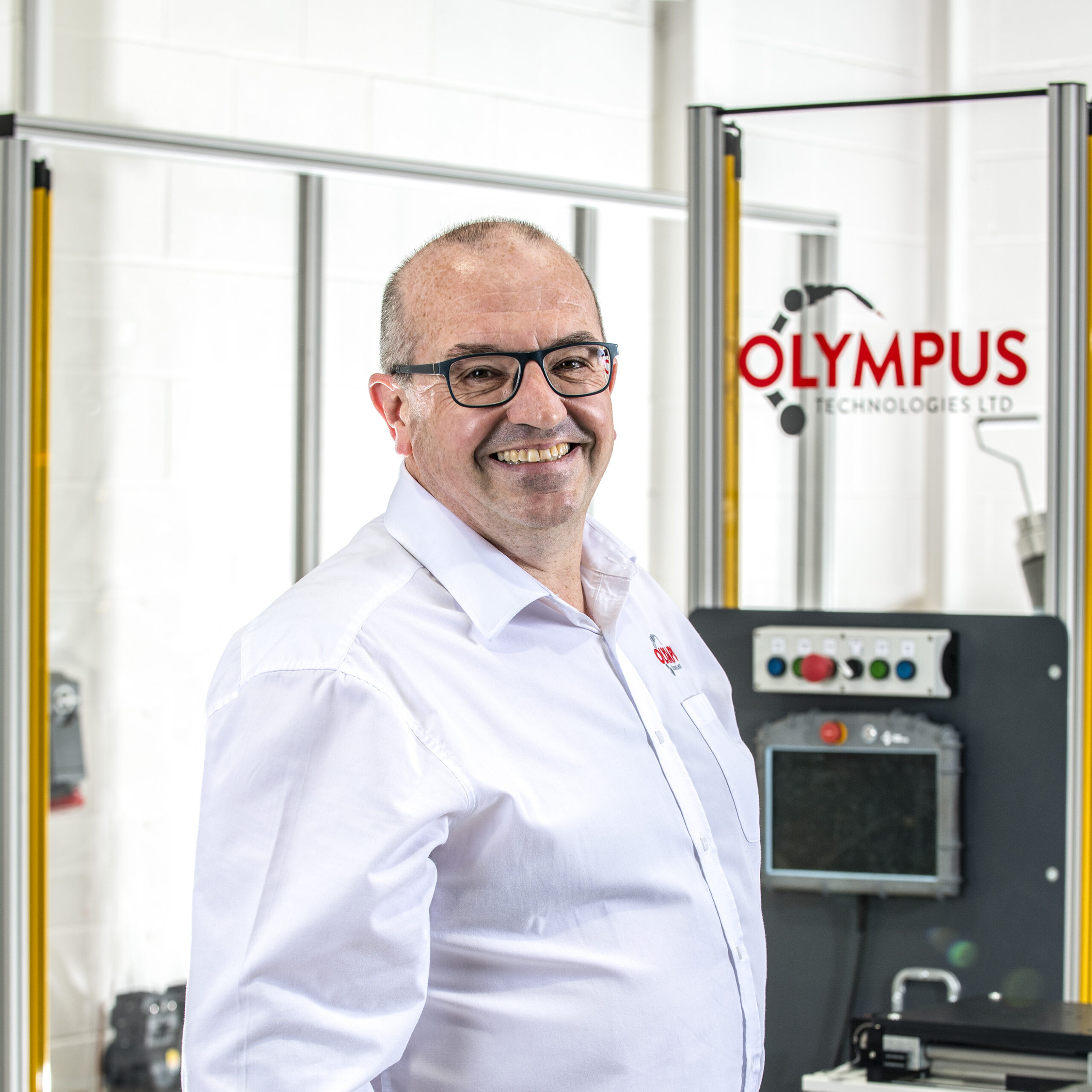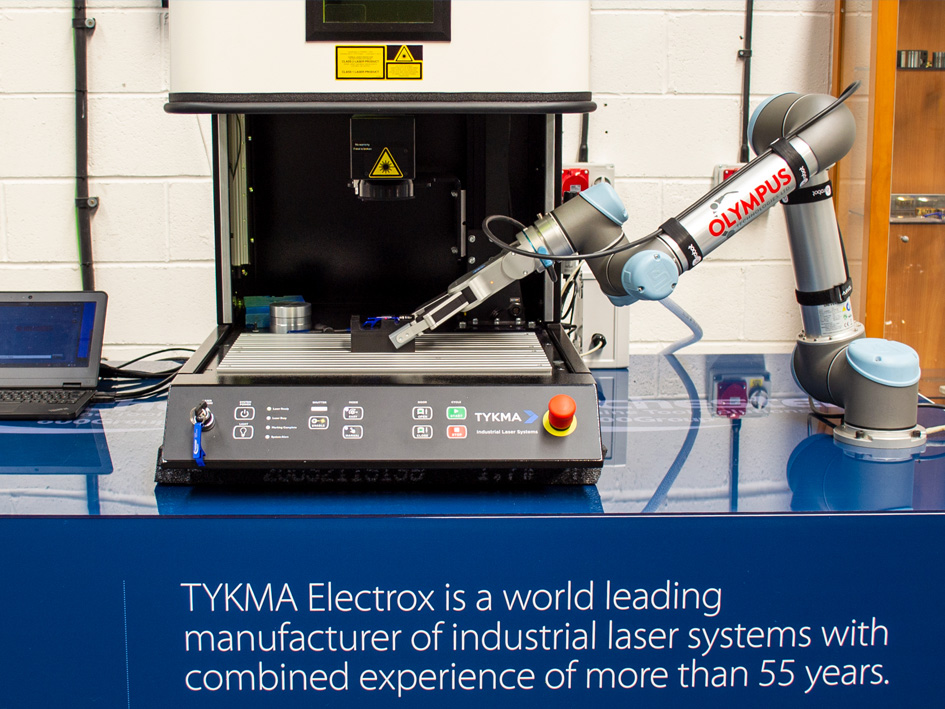A smarter path for UK manufacturers
The UK sheet metal fabrication industry is under pressure.
Labour shortages, rising production costs, and complex part geometries make it harder to maintain consistent quality, meet production requirements, and stay competitive.
Traditional methods often struggle with safety, manual handling of thicker materials, and the physical strain on operators. As the need for precision and high levels of repeatability grows, automating repetitive tasks becomes a strategic necessity.
Olympus Technologies offers a practical automation solution for press brake operations that helps boost productivity, reduce cost, and improve safety in real-world manufacturing environments.
Olympus Technologies: a smarter automation solution
As a UK integrator with deep engineering knowledge, Olympus delivers cobot press brake tending systems that are plug and play, cost effective, and easy to scale.
The cells work with leading press brakes, including TRUMPF TruBend, and use Universal Robots models such as the UR12e and UR20.
Modular grippers, mobile bases, custom tools, and intuitive software solutions allow fast setup and rapid onboarding.
Each system is built for ability and range. You can handle thicker materials, adapt to tight design specifications, and meet new product design needs without rebuilding the cell.
Why automate your press brake operation
Labour shortages and rising costs
Across the UK, finding skilled press brake operators is difficult.
Press brake automation reduces reliance on scarce labour, lets staff shift to programming, quality inspection, or managing multiple machines, and helps companies keep lines moving in high volume production.
Safer bends with collaborative robots
Manual bending puts people close to high-force equipment. Cobot press brake tending removes workers from the pinch points and carries the physical load.
Safety features such as scanners, light curtains, and emergency stops enable safe human robot collaboration.
The result is safer bends cobot press brake tending that protects people while maintaining output.
Improved accuracy and reduced variability
Human fatigue and inconsistent measurement are classic sources of human error.
A cobot-driven bending process follows the same process every time, holds tight tolerances, and helps achieve consistent quality on both complex shapes and long runs.
That consistency supports continuous improvement and more reliable delivery.
Built for flexibility, results, and real production
What sets Olympus apart is a focus on practical integration and fast time to value.
- Compatible with a wide range of CNC press brakes and ancillary equipment
- Designed for thicker materials and diverse design process needs
- Mobile bases and automatic tool changers for flexible cell layout
- Intuitive software and clear education for quick operator confidence
- Proven across industries such as automotive and general manufacturing
Whether you are new to automation or extending a mature line, the goal is simple. Create a safer, more efficient line that produces parts to spec and at speed.
How the system works
A typical Olympus cell includes:
- A cobot from Universal Robots
- Bespoke end of arm tools with sensors and vision to measure, grip, and form reliably
- Full integration to the press brake controller and machine I/O
- Operator-friendly software solutions for job selection, bend sequence, and data capture
- A compact setup that fits your floor space and existing processes
The system is designed to create flow in the bending cell, reduce part travel, and support producing parts with fewer touches at low cost.
What it delivers
- Productivity gains through unattended cycling and faster changeovers
- Better efficiency from consistent handling and accurate part measurement
- Lower production costs through reduced scrap and less rework
- Higher value for customers due to reliable lead times and stable quality
- Stronger practice of continuous improvement with actionable data
In high volume production, the cell keeps pace. In high mix work, fast job switching and saved programs keep the line moving.
From planning to production: a simple method
- Assess the parts, design specifications, and current methods
- Create the cell concept, tool set, and processes that match your goals
- Integrate robot, press brake, and software with clear interfaces
- Train the team, validate the process, and start live production
- Provide ongoing support with remote diagnostics and scheduled service
This approach helps manufacturers obtain results without long downtime and keeps the system ready for future parts.
Return on investment
A well specified cell is typically cash positive within standard payback windows for UK manufacturers. Savings come from fewer injuries, fewer stoppages, and better machine utilisation.
Add in reduced scrap, tighter measurement control, and steadier output, and the business case grows stronger over time.
Final thoughts: a better way to bend
In an industry where efficiency, safety, and precision matter, relying on other methods that struggle to keep up no longer makes sense.
Olympus Technologies blends proven technology with practical delivery so companies can automate, improve efficiency, and meet future demand with confidence.
The result is a smarter bending process, higher quality, and a solution that can scale as your business grows.
FAQs
What is cobot press brake tending, and how does it improve safety
It uses collaborative robots to load and unload press brakes, keeping people away from high-force zones. With built-in safety features, scanners, and light curtains, you reduce risk and maintain production.
How does automation affect labour costs
By taking on repetitive tasks, the cell frees skilled staff for programming and inspection, controls labour costs, and stabilises throughput even when hiring is difficult.
Can automation handle thicker materials and complex shapes
Yes. The Olympus system is designed for thicker materials, varied design specifications, and complex part shape. Custom tools and smart setup options maintain tight tolerances across a wide range of parts.
Why invest in an automation solution like this
You boost productivity, improve efficiency, and deliver consistent quality on every job. You also contribute to safer work, lower waste, and stronger schedule performance, which aligns with modern manufacturing goals.














